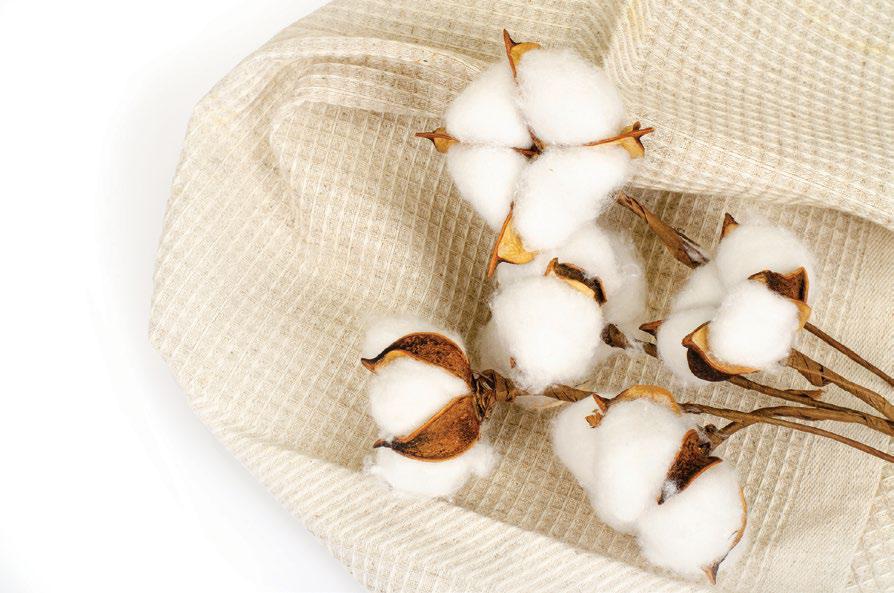Cotton
Cotton is a natural fibre derived from cotton plants whose uses date back to the fifth millennium B.C. The soft and fluffy cotton is primarily composed of cellulose, an insoluble organic compound found in plants. This cotton is spun into yarn that is then woven to create a soft, durable fabric. Cotton fabric has become one of the most commonly-used fabrics with excellent wearability, and is widely used in clothing fabrics, decorative fabrics and industrial fabrics. With the in-depth development of textile printing and dyeing, a variety of cotton fabrics are becoming more and more abundant with an improved quality in terms of their appearance and performance. The benefits of this versatile material are many. Cotton clothes have the advantage of being soft and comfortable, durable and breathable as well. It is a natural fibre that can be produced on a large scale to clothe millions around the globe whilst still being affordable and accessible.
The soft and fluffy cotton is primarily composed of cellulose, an insoluble organic compound found in plants. This cotton is spun into yarn that is then woven to create a soft, durable fabric. Cotton fabric has become one of the most commonly-used fabrics with excellent wearability, and is widely used in clothing fabrics, decorative fabrics and industrial fabrics. With the in-depth development of textile printing and dyeing, a variety of cotton fabrics are becoming more and more abundant with an improved quality in terms of their appearance and performance. The benefits of this versatile material are many. Cotton clothes have the advantage of being soft and comfortable, durable and breathable as well. It is a natural fibre that can be produced on a large scale to clothe millions around the globe whilst still being affordable and accessible.
* Cotton is an all-weather fabric. Its fibre structure keeps you cool in the summer whilst providing a layer of added insulation in the winter.
* As a natural material, cotton is 100% biodegradable and compostable.
* Cotton is an incredibly versatile material that can be used in anything right from silky soft dresses to stiffer smart shirts. Cotton can be woven into a variety of thicknesses to alter its strength, warmth and feel to create fabrics like denim, suede, corduroy, jersey, poplin, etc.
* What makes cotton special is its strength and durability. When cotton gets wet it is actually stronger, which is the opposite of most cellulose fibres such as rayon (wood pulp). It also helps your clothes last longer, and is the key to any sustainable wardrobe.
A debate about the superiority of natural cotton versus synthetic fibres has been happening for decades. Though synthetic fibres have only been in the market for a couple of hundred years, they are now competing in the production and distribution with natural fabrics that have been around for thousands of years. This fast rise in consumption is due to the high demand for affordable, fast fashion. Synthetic fabrics can be found everywhere — home decor, clothing and in commercial environments, too. They certainly have advantages such as durability, conducive to mass production and resistance to stains and water. However, synthetic fabrics have one significant disadvantage; they are destructive to the environment. If not recycled, they end up in a landfill where they take many years to break down into smaller pieces called microplastics. These tiny pieces of plastic find their way into our oceans, food, water supply, wildlife and food chains, which are harmful to our health and are responsible for the decline of our wildlife and our oceans.
To conclude, cotton has an environmental edge since it is natural and biodegradable. With more emphasis on the usage and production of organic cotton and conventional cotton practices inching towards environmentally friendly methods, this fabric is here to stay.



